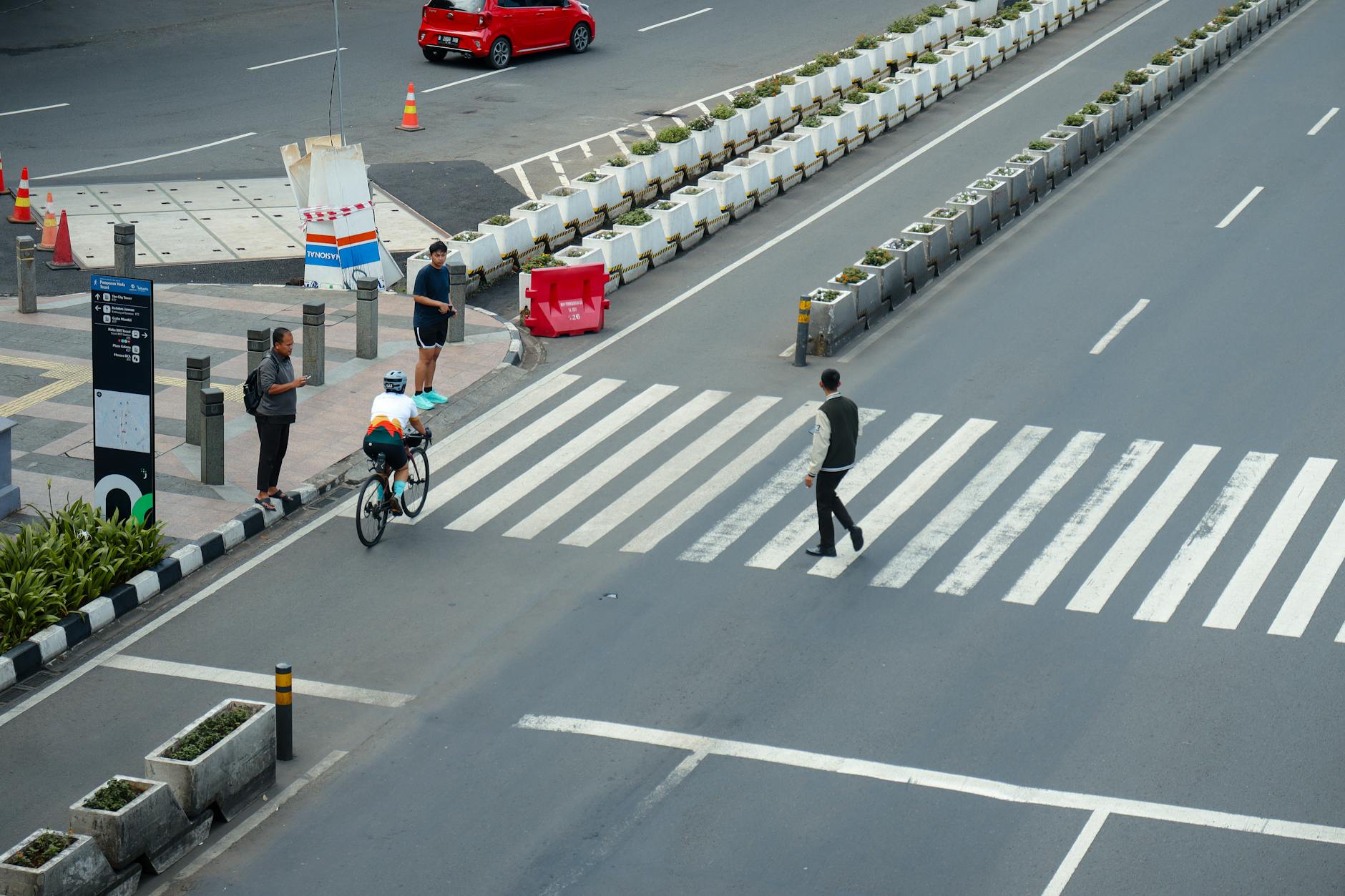If you feel like your allergies are worse in the city, you’re not imagining it. Urban living can amplify allergy symptoms, turning a mild inconvenience into a daily struggle. Factors like air pollution, densely-packed vegetation, and climate change are combining to create the perfect storm for heightened reactions. Cities with more vehicles, poorly chosen urban trees, and longer pollen seasons often rank highest for allergy misery. In this post, we’ll explore why certain cities can feel like allergy hotspots and what makes the environment so challenging for your body to handle.
How Pollen and Airborne Allergens Affect Urban Areas
If you’ve been sneezing more than usual while navigating city streets, you’re not alone. Pollen and other airborne allergens can feel unavoidable in urban environments. Cities create a unique set of conditions that make allergy symptoms worse. From the types of plants used in landscaping to how wind moves between buildings, urban areas give allergens plenty of opportunities to thrive. Let’s take a closer look at the factors that connect pollen to city life.
Pollen Dynamics in Cities
Cities act like giant pollen traps. Urban design, including tall buildings and narrow streets, impacts how pollen moves through the air. The wind carries pollen from trees, grasses, and weeds, but instead of dispersing freely, it gets stuck in these urban wind tunnels. The result? Pollen lingers in the air longer, and exposure can feel unavoidable.
High-rise buildings and asphalt contribute too. Hard surfaces reflect heat, creating “urban heat islands” that can extend pollen seasons. Additionally, stagnant air often traps allergens at lower levels, exactly where people breathe. Windy days may stir things up, but pollen can re-circulate between buildings instead of blowing away.
Tree and Plant Species Selection
Ever noticed how cities plant a lot of trees? While greenery improves air quality and cools neighborhoods, the wrong plants can wreak havoc for allergy sufferers. Many urban planners favor male trees and plants, which don’t drop fruit or seeds but instead produce high amounts of pollen.
Species like oak, birch, and maple are among the worst offenders for allergy-triggering pollen. Grasses grown for ornamental purposes also release allergens into the air. Because the focus is often on maintenance efficiency rather than allergen levels, urban greenery can inadvertently create higher concentrations of irritants.
Airborne Allergen Concentration
Urban environments pack people—and allergens—into smaller spaces. Cities also have less vegetation diversity than rural areas, leading to a dominance of certain species that release highly allergenic pollen. Combine this with pollution from vehicles and industries, and you’ve got a potent mix. Pollutants like nitrogen dioxide and ground-level ozone not only irritate the respiratory system but also interact with pollen, making it even more allergenic.
Another factor is reduced natural barriers. In rural settings, sprawling landscapes and forests help disperse pollen, but in cities, concrete jungles limit airflow. This results in higher allergen concentrations, especially during peak pollen seasons. Think of it as a dense fog of irritants hanging over neighborhoods, unnoticed but ever-present.
Pollen in urban areas isn’t going anywhere, but understanding how cities amplify its effects is the first step to finding solutions.
The Role of Air Pollution in Allergy Severity
Urban air pollution isn’t just an ecological issue—it’s a health problem that exacerbates allergies for millions of people. Cities churn out pollutants that bind with allergens, making them more potent. Combined with traffic, industrial activity, and densely packed greenery, air pollution creates an environment where allergies thrive. Let’s examine how particulate matter and pollution extend pollen’s impact on your health.
Particulate Matter and Allergens
Particulate matter, such as diesel exhaust particles (DEPs), doesn’t just contribute to smog—it worsens allergies too. These microscopic particles carry allergens deeper into your lungs, where they trigger stronger reactions. Picture these particles like tiny delivery trucks carrying allergens past your body’s normal defenses, creating chaos in sensitive airways.
Pollutants like nitrogen dioxide (NO₂) and ground-level ozone (O₃) also weaken the natural barriers in your respiratory tract. This creates openings for allergens to penetrate lodging deeper in the lungs. This is one reason smog-heavy cities see higher rates of asthma and allergen-induced symptoms.
Diesel particles are particularly harmful, acting as an “adjuvant”—something that boosts the immune system’s response. When these particles attach to pollen grains, they amplify allergic reactions. It’s a bit like throwing fuel on the fire, making something already irritating much worse.
Prolonged Pollen Presence
Air pollution does more than irritate your airways; it manipulates the natural behavior of allergens like pollen. Normally, pollen grains break down after a short period. But in polluted environments, small particles like PM2.5 (particulate matter less than 2.5 micrometers in diameter) can attach to pollen. These particles protect it from disintegration, prolonging its time in the air.
In polluted cities, high ozone levels can alter pollen grains, breaking them into smaller pieces. Instead of dispersing harmlessly, these fragments remain airborne, often turning into a powerful allergenic cloud that lingers for hours or even days.
The result? Prolonged exposure and heightened sensitivity. This explains why some cities with poor air quality often correlate with intense allergy seasons. It’s not just about how much pollen is produced, but how long it sticks around and how disruptive it becomes to those who breathe it in.

Photo by Roger Brown
Climate Change and Its Influence on Allergies
Climate change is transforming ecosystems and weather patterns, and those changes have direct consequences for allergies. People sensitive to pollen and airborne allergens may notice worsening symptoms as temperatures rise and precipitation patterns shift. Here is how climate change affects allergies in two major ways:
Warmer Temperatures and Increased Pollen
Warmer weather doesn’t just bring longer days—it extends pollen seasons too. Higher temperatures lead to earlier blooming periods for trees, grasses, and weeds, meaning plants release pollen weeks ahead of schedule. What does that mean? You could find yourself sneezing in March when allergy season used to start in April.
Not only are pollen seasons starting earlier, but they’re lasting longer. Plants in warmer climates remain active, producing more pollen than they would in cooler, shorter growing periods. This extended cycle gives allergy sufferers more opportunities for exposure and higher cumulative doses of allergens over a season. Some studies even predict that total pollen production could increase by 20-40% by midcentury in parts of North America.
Additionally, rising levels of CO₂ in the atmosphere act as fertilizer for many plants, particularly weeds like ragweed. A single ragweed plant, under higher CO₂ conditions, produces significantly more pollen. More pollen in the air doesn’t just mean more sneezing—it increases the likelihood of respiratory distress and worsened asthma for those with sensitivities.
Drought and Its Effects
While some areas see increased rainfall and flooding due to climate change, others endure prolonged droughts. For allergy sufferers, dry conditions create a unique challenge. Rain helps to wash pollen out of the air and onto the ground, but when rain is scarce during peak pollen seasons, it allows allergens to linger longer in the atmosphere.
In cities, the effects of drought are even more pronounced. Without rain, pollen accumulates, especially in urban pockets with limited vegetation to absorb it. Urban heat islands—areas of higher localized temperatures caused by buildings and asphalt—amplify the problem. These microclimates make pollen particles more active and keep them circulating at the ground level, where breathing them in is unavoidable. Think of it as a dusting of invisible irritants hanging in the air, waiting to trigger your symptoms.
Dry conditions also worsen air quality. Pollutants such as nitrogen dioxide or ozone from traffic and industry don’t float away easily without wind or rainfall. Instead, they interact with pollen, making it even more allergenic. The result? Harsher allergy symptoms, longer durations of discomfort, and intensified health impacts for people living in areas prone to prolonged dry spells.

Photo by Markus Spiske
Climate change isn’t just an environmental crisis—it’s a health issue directly affecting how we experience allergies. Warmer temperatures and less rain are creating conditions for more pollen, longer exposure, and exacerbated symptoms, leaving urban residents with few places to hide.
Lifestyle and Urbanization Factors
The way we live in urban environments affects our exposure to allergens in profound ways. From how buildings shape airflow to what microbes we’re exposed to on a daily basis, cities mold the interaction between our immune systems and the environment. Below, we’ll explore how reduced exposure to pathogens and urban design contribute to a rise in allergies, especially in densely populated areas.
Reduced Exposure to Pathogens
Cities prioritize sanitation, which has undoubtedly improved public health. However, the excess cleanliness of urban life might be a double-edged sword when it comes to allergies. This fits into the hygiene hypothesis, which suggests that a lack of exposure to germs early in life can hinder the development of the immune system, ultimately making it overreactive to harmless substances like pollen or dust.
- Limited microbial exposure: Urban environments, compared to rural or undeveloped areas, have a significantly lower diversity of microbes. This reduced microbial load can deprive the immune system of the “training” it needs to differentiate harmful threats from harmless environmental allergens.
- Modern lifestyles: The prevalence of cesarean births, formula feeding, and antibiotic use—all more common in urban populations—further limits exposure to beneficial bacteria, increasing the likelihood of allergies.
- Indoor dominance: Children growing up in urban apartment complexes spend a bulk of their time indoors. This limits their contact with soil microbes and other natural elements known to stimulate immune resilience. Imagine a forest compared to a sterile indoor environment—without constant exposure to nature, the immune system doesn’t learn how to stay balanced.
This rise in allergenic sensitivity is compounded by urbanization’s tendency to separate humans from natural ecosystems, essentially creating populations more vulnerable to triggers like pollen.
Urban Design and Airflow
Urban infrastructure doesn’t just influence what we see—it also dictates how we breathe. Buildings, streets, and other man-made structures can dramatically affect airflow patterns, which in turn alter how allergens like pollen spread and settle.
- Airflow stagnation: High-rise buildings and tightly packed structures create “wind shadow” zones where air movement slows down. These stagnant areas allow pollen and pollutants to linger longer, leading to higher concentrations at ground level—right where you walk, bike, and breathe.
- Wind corridors: City planners often design streets to optimize airflow, but wind corridors can also act as highways for allergens. Instead of dispersing pollen particles, these concentrated gusts may carry them directly to populated areas, intensifying localized exposure.
- Rise of urban heat islands: Cities absorb more heat due to asphalt, concrete, and limited tree coverage. This elevated temperature increases pollen production as many plants thrive in warmer climates. Moreover, once pollen is airborne, the lack of consistent airflow in urban “heat pockets” means it stays where people gather—on streets, playgrounds, parks, and even your balcony.
- Indoor air circulation challenges: Closed windows, HVAC systems, and poor ventilation in high-rise apartments don’t always shield city residents from allergens. In fact, poorly filtered systems can recycle pollen and other particles, keeping allergens trapped indoors.

Photo by Yazid N
Urban architecture, while designed to optimize space and functionality, can inadvertently intensify allergy risks. By considering how airflow patterns and microbial exposure are impacted by the built environment, we can start to understand the challenges allergy sufferers face in the world’s biggest cities. From narrow alleys to sprawling skyscrapers, urban planning often collides with nature—and our immune systems end up paying the price.
Practical Tips for Managing Allergies in Cities
Living in a city can be tough on allergy sufferers. Between polluted air and high allergen levels, symptoms often feel unavoidable. While you can’t control every environmental factor, there are practical steps to alleviate discomfort and reduce exposure. This section covers medication options, ways to limit pollen exposure, and even suggests changes cities can make to help allergy sufferers long-term.
Medication Options
If you’re dealing with urban allergies, medication can be a lifesaver. The right treatment reduces symptoms so you can focus on your day instead of constant sneezing or itchy eyes. Here’s a breakdown of common medications:
- Antihistamines: These block the effects of histamine, a chemical your body releases when it reacts to allergens. Over-the-counter options like loratadine (Claritin) or cetirizine (Zyrtec) work well for seasonal allergies. For 24-hour relief, try a non-drowsy formula.
- Nasal sprays: Steroid-based sprays like fluticasone (Flonase) are great for reducing nasal swelling and congestion. They’re especially effective in cities with high pollen counts or air pollution.
- Decongestants: Pills or sprays containing pseudoephedrine (Sudafed) help clear stuffy noses. However, they’re not ideal for long-term use as they may raise blood pressure or cause dependency in nasal sprays.
- Immunotherapy: Allergy shots or sublingual tablets gradually reduce your sensitivity to allergens over time. This option is great for people who experience severe symptoms despite other treatments.
Always check with your doctor before starting new medications, especially if you have other health concerns.
Reducing Pollen Exposure
Cities may feel like allergy hotspots, but small steps can make a big difference in how much pollen you’re exposed to. Here are practical actions to try:
- Keep your windows closed: While fresh air might be tempting, open windows invite pollen indoors. Use air conditioning to stay cool without exposure.
- Use an air purifier: A purifier with a HEPA filter traps pollen, dust, and tiny particles. Place one in your bedroom for maximum impact while you sleep.
- Shower and change clothes: When you’ve been outside, pollen can cling to your hair and fabric. Rinse off to prevent it from spreading around your home.
- Check pollen counts: Apps or websites like the National Allergy Bureau can alert you to high-pollen days. Plan outdoor activities for times when counts are lower, like evenings.
- Wear sunglasses and masks: Sunglasses shield your eyes from airborne particles, while masks protect you from inhaling pollen—especially on windy days.
By building these habits, you can minimize your exposure and feel more in control during allergy season.
Environmental Adjustments
Cities play a big role in controlling allergens. Urban planners can make design choices that lighten the burden on residents with allergies. Here’s what experts recommend:
- Plant smarter trees: Many cities plant male trees because they don’t produce fruit, but they release massive amounts of pollen. Substituting with female trees or native species that release less pollen can help reduce allergen levels over time.
- Green roofs and walls: These structures add vegetation to urban areas and can act as a barrier against pollen by trapping it or directing it away from people.
- Improve air quality: Cleaner energy policies can reduce pollution that worsens allergies. For example, fewer diesel emissions mean less particulate matter to carry pollen deeper into your lungs.
- Better landscaping choices: Encouraging biodiversity in urban parks and gardens can spread out pollen production, reducing the dominance of a single allergenic plant species.
City-wide change takes time, but immediate adjustments like choosing the right tree species and enforcing cleaner air regulations can improve life for everyone, especially those with allergies.
Small changes in your daily habits and larger shifts in urban planning can reduce the strain that city living places on your allergies. While you work on managing your own environment, advocating for greener, health-conscious city policies can make a lasting impact for all.
Conclusion
Urban allergies are more than just a seasonal nuisance—they reflect how cities shape our health. Pollution, poor urban planning, and climate trends all intensify allergens, making it vital to address these issues. Small changes, like choosing low-pollen plants or improving air quality, can ease the burden for millions.
Understanding how cities magnify allergies empowers us to find smarter, healthier solutions. Whether you’re managing symptoms with lifestyle adjustments or advocating for better urban policies, every step matters. Allergies don’t have to define life in the city. The key lies in creating environments that prioritize both sustainability and well-being.


